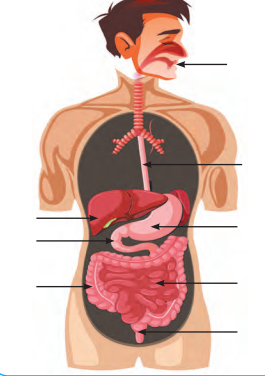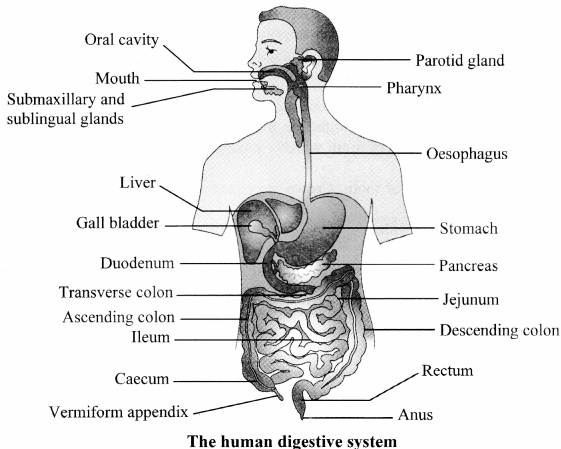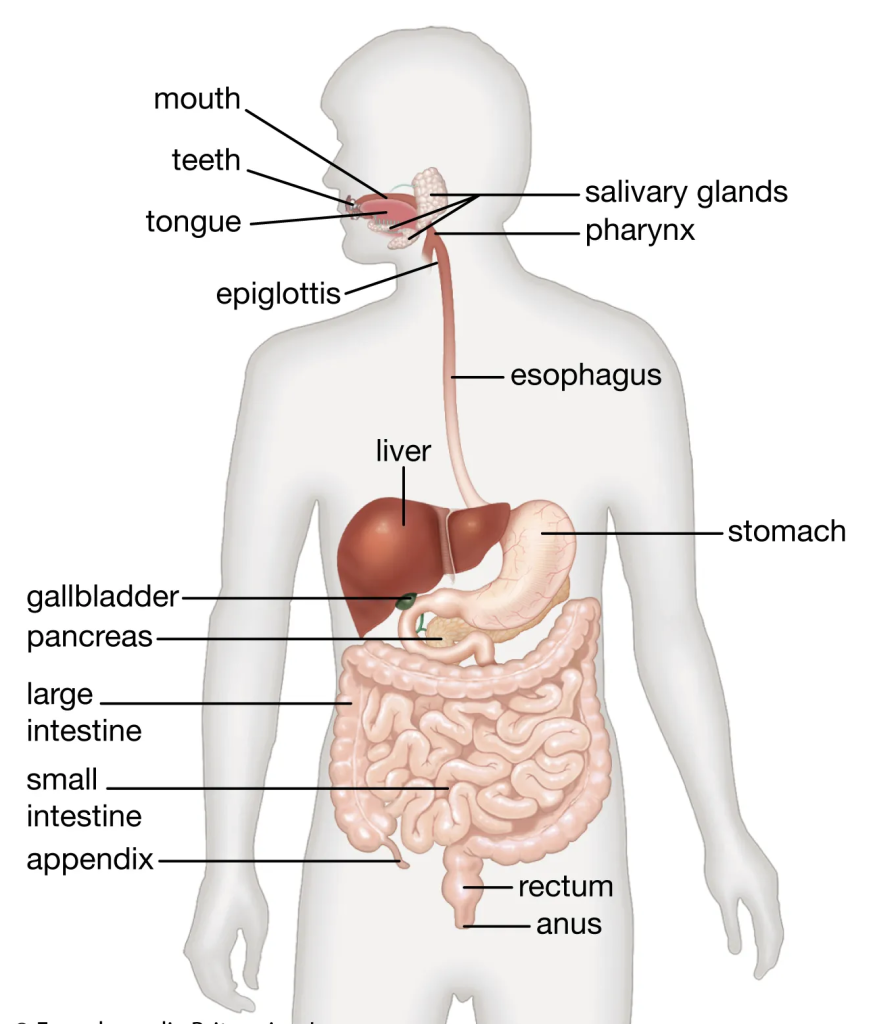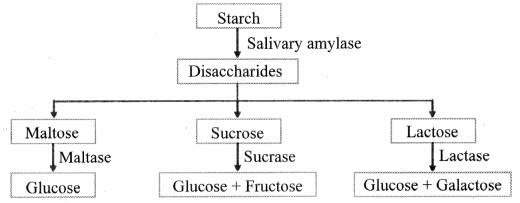Human Nutrition – Solutions
Can you recall? Page No. 161
1. What is nutrition?
Answer: Nutrition is the sum of processes by which an organism consumes and utilizes food substances to meet its dietary needs, including carbohydrates, proteins, fats, vitamins, minerals, water, and fibers in adequate amounts. According to the World Health Organization (WHO), it involves the intake of food in relation to the body’s dietary requirements, encompassing ingestion, digestion, absorption, assimilation, and egestion.
2. Enlist life processes that provide us energy to perform different activities.
Answer: The life processes that provide energy include:1. What will be the dental formula of a three years old child?
- Digestion: Breaks down complex food into simple, absorbable forms.
- Absorption: Transfers nutrients into the bloodstream.
- Assimilation: Incorporates absorbed nutrients into body tissues for energy production.
- Cellular Respiration: Converts nutrients (e.g., glucose) into ATP, the energy currency for activities.
Label the diagram Page No. 161
Answer:
Think about it Page No. 161
Our diet includes all necessary nutrients. Still we need to digest it. Why is it so?
Answer: Even though our diet contains all necessary nutrients, digestion is essential because the complex, non-diffusible, and non-absorbable food substances (e.g., starches, proteins, fats) must be broken down into simple, diffusible, and assimilable forms (e.g., glucose, amino acids, fatty acids). This process allows nutrients to be absorbed through the alimentary canal’s mucosa into the blood or lymph for utilization by the body.
Find out Page No. 162
1. What will be the dental formula of a three years old child?
Answer: A three-year-old child typically has milk (deciduous) teeth, which include 20 teeth (10 in each jaw). The dental formula for a child is
, representing 2 incisors, 1 canine, 0 premolars, and 2 molars per quadrant, totaling
- Dental Caries: Tooth decay caused by bacterial acid production that erodes enamel and dentin.
- Dental Plaque: A sticky film of bacteria and food debris on teeth that contributes to caries if not removed.
- Prevention: Regular brushing and flossing to remove plaque, reducing sugary food intake, using fluoride toothpaste to strengthen enamel, and visiting a dentist for cleanings and check-ups can help avoid dental caries and plaque buildup.
Internet my friend Page No. 162
1. Find out the role of orthodontist and dental technician.
Answer:
- Orthodontist: A specialized dentist who diagnoses, prevents, and corrects misaligned teeth and jaws, often using braces, aligners, or other appliances to improve bite and dental aesthetics.
- Dental Technician: A professional who designs, creates, and repairs dental prosthetics (e.g., crowns, bridges, dentures) and orthodontic appliances based on dentists’ specifications, working primarily in dental laboratories.
2. What is root canal treatment?
Answer: Root canal treatment is a dental procedure to save a damaged or infected tooth by removing the infected pulp from the pulp cavity and root canal, cleaning and disinfecting the area, and then filling and sealing it with a material to prevent further infection.
Do you know ? Page No. 162
1. Who controls the deglutition?
Answer: Deglutition (swallowing) is controlled by both the voluntary and involuntary nervous systems. The initial phase is controlled voluntarily by the brain’s cortex, while the pharyngeal and esophageal phases are regulated involuntarily by the medulla oblongata through cranial nerves.
2. Is deglutition voluntary or involuntary?
Answer: Deglutition is both voluntary and involuntary. The oral phase, where the tongue pushes the bolus into the pharynx, is voluntary, while the pharyngeal and esophageal phases, involving the epiglottis and peristalsis, are involuntary.
Find out Page No. 163
1. What is heart burn? Why do we take antacids to control it?
Answer:
- Heart Burn: Heart burn is a burning sensation in the chest caused by acid reflux, where stomach acid flows back into the esophagus due to a relaxed or weak gastroesophageal sphincter.
- Use of Antacids: Antacids are taken to neutralize excess stomach acid, reducing irritation and inflammation in the esophagus, thereby alleviating the discomfort associated with heart burn.
2. You must have heard of appendicitis. It is inflammation of appendix. Find more information about this disorder.
Answer: Appendicitis is the inflammation of the vermiform appendix, a vestigial organ arising from the caecum. It is often caused by blockage of the appendix (e.g., by fecal matter, foreign bodies, or infection), leading to bacterial overgrowth, swelling, and potential rupture. Symptoms include abdominal pain (especially in the lower right quadrant), fever, nausea, and vomiting. If untreated, it can lead to complications like peritonitis. Treatment typically involves surgical removal of the appendix (appendectomy).
Use your brain power Page No. 165
1. Draw a neat labelled diagram of human alimentary canal and associated glands in situ.
Answer:
2. Write a note or human dentition.
Answer: Human dentition is characterized as thecodont (teeth fixed in jaw sockets by gomphosis joints), diphyodont (two sets: milk and permanent teeth), and heterodont (four types: incisors, canines, premolars, molars). Adults have 32 teeth with a dental formula of
Internet my friend Page No. 167
1. What is lactose intolerance?
Answer: Lactose intolerance is the inability to digest lactose, a sugar found in milk, due to a deficiency of the enzyme lactase in the small intestine. This leads to symptoms such as bloating, diarrhea, and abdominal discomfort after consuming dairy products.
2. How are bile pigments formed?
Answer: Bile pigments, such as bilirubin and biliverdin, are formed from the breakdown of hemoglobin during the destruction of old or damaged red blood cells in the liver. The heme portion of hemoglobin is converted into bilirubin, which is then processed and secreted into bile, imparting color to fecal matter.
Think about it Page No. 167
How can I keep my pancreas healthy? Can a person live without pancreas?
Answer:
- Keeping the Pancreas Healthy: The document does not explicitly provide tips for maintaining pancreatic health, but it mentions pancreatitis (inflammation of the pancreas) caused by alcoholism, gallstones, or high levels of calcium or fats in the blood. To keep the pancreas healthy, one can infer the following: avoid excessive alcohol consumption, maintain a balanced diet low in unhealthy fats, manage blood sugar levels, and seek medical advice for gallstone issues. Regular exercise and avoiding smoking also support overall pancreatic health.
- Can a Person Live Without Pancreas?: The document does not directly address this question. However, based on general biological knowledge and the pancreas’s critical roles (exocrine: secreting digestive enzymes; endocrine: regulating blood sugar via insulin and glucagon), living without a pancreas is possible but challenging. Patients require lifelong insulin therapy, digestive enzyme supplements, and careful dietary management to compensate for the loss of pancreatic functions. Medical interventions, such as pancreatic islet transplantation, may also be necessary.
Use your brain power Page No. 168
1. Make a flow chart for digestion of carbohydrate.
Answer:
2. What is a proenzyme? Enlist various proenzymes involved in process of digestion and state their function.
Answer:
Proenzyme Definition: A proenzyme (or zymogen) is an inactive precursor of an enzyme that requires activation (e.g., by cleavage or pH change) to become functional, preventing unwanted digestion of the body’s own tissues.
Proenzymes Involved in Digestion:
- Pepsinogen (Stomach):
- Activation: Converted to pepsin by HCl in the stomach’s acidic medium (pH 1.8).
- Function: Pepsin digests proteins into simpler forms like peptones and proteoses.
- Trypsinogen (Pancreas):
- Activation: Converted to trypsin by enterokinase in the small intestine.
- Function: Trypsin digests proteins, proteoses, and peptones into polypeptides and activates other proenzymes like chymotrypsinogen.
- Chymotrypsinogen (Pancreas):
- Activation: Converted to chymotrypsin by trypsin in the small intestine.
- Function: Chymotrypsin digests polypeptides into dipeptides.
3. Differentiate between chyme and chyle.
Answer:
| No. | Chyme | Chyle |
| a. | Chyme is a semi-fluid acidic mass of partially digested food. | Chyle is an alkaline slurry which contains various nutrients ready for absorption. |
| b. | Chyme leaves stomach and enters the small intestine. | Chyle leaves small intestine and enters large intestine. |
4. Digestion of fats take place only after the food reaches small intestine. Give reason.
Answer: Fat digestion occurs primarily in the small intestine because bile juice (from the liver) and pancreatic lipase (from the pancreas) are required, and these are secreted only in the duodenum. Bile salts emulsify fats, increasing their surface area for enzymatic action, while pancreatic and intestinal lipases break down emulsified fats into fatty acids and monoglycerides. The stomach lacks these enzymes and conditions, so fat digestion does not occur there.
Can you recall? Page No. 170
1. What is balanced diet?
Answer: A balanced diet is one that contains all essential nutrients—carbohydrates, proteins, fats, vitamins, minerals, water, and fibers—in adequate amounts to meet the body’s dietary needs, supporting energy production, growth, tissue repair, and overall health.
2. Explain the terms undernourished, overnourished and malnourished in details.
Answer:
- Undernourished: This refers to a condition where an individual consumes insufficient quantities of essential nutrients, leading to deficiencies that impair physical growth, mental development, and overall health. Undernutrition can result in disorders like Protein Energy Malnutrition (PEM), causing diseases such as Kwashiorkor or Marasmus. It is often linked to poverty, inadequate food access, or improper dietary habits.
- Overnourished: This describes a state where an individual consumes excessive amounts of nutrients, particularly calories, leading to health issues such as obesity, diabetes, or cardiovascular diseases. Overnutrition occurs when intake exceeds the body’s needs, often due to overeating high-calorie, low-nutrient foods, resulting in fat accumulation and metabolic imbalances.
- Malnourished: Malnutrition encompasses both undernutrition and overnutrition, indicating an imbalance in nutrient intake—either too little or too much of certain nutrients. It includes deficiencies (e.g., lack of protein causing Kwashiorkor) or excesses (e.g., excessive fats leading to obesity), as well as improper nutrient proportions, which can retard growth, weaken immunity, and increase susceptibility to diseases.





Leave a Reply